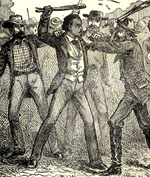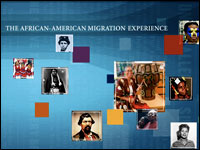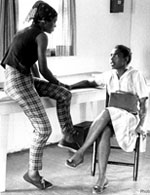Rankin House [OH]
The Rankin House was an important stop on the Underground Railroad in southern Ohio through which many slaves escaped from the South to freedom. John Rankin was a Presbyterian minister and educator who devoted much of his life to the antislavery movement. In 1826 he published his antislavery book, Letters on American Slavery. In 1834 he founded the Ohio Anti-Slavery Society in Zanesville. From 1825 to 1865, Rankin and his wife Jean, with their Brown County neighbors, sheltered more than 2,000 slaves escaping to freedom, with as many as 12 escapees being hidden in the Rankin home at one time. The house, a National Historic Landmark, is included in the National Underground Railroad to Freedom Network. Outside is a reconstruction of the stairway used by slaves to climb from the Ohio River to the Rankin House.
The house offers tours and educational programs.




